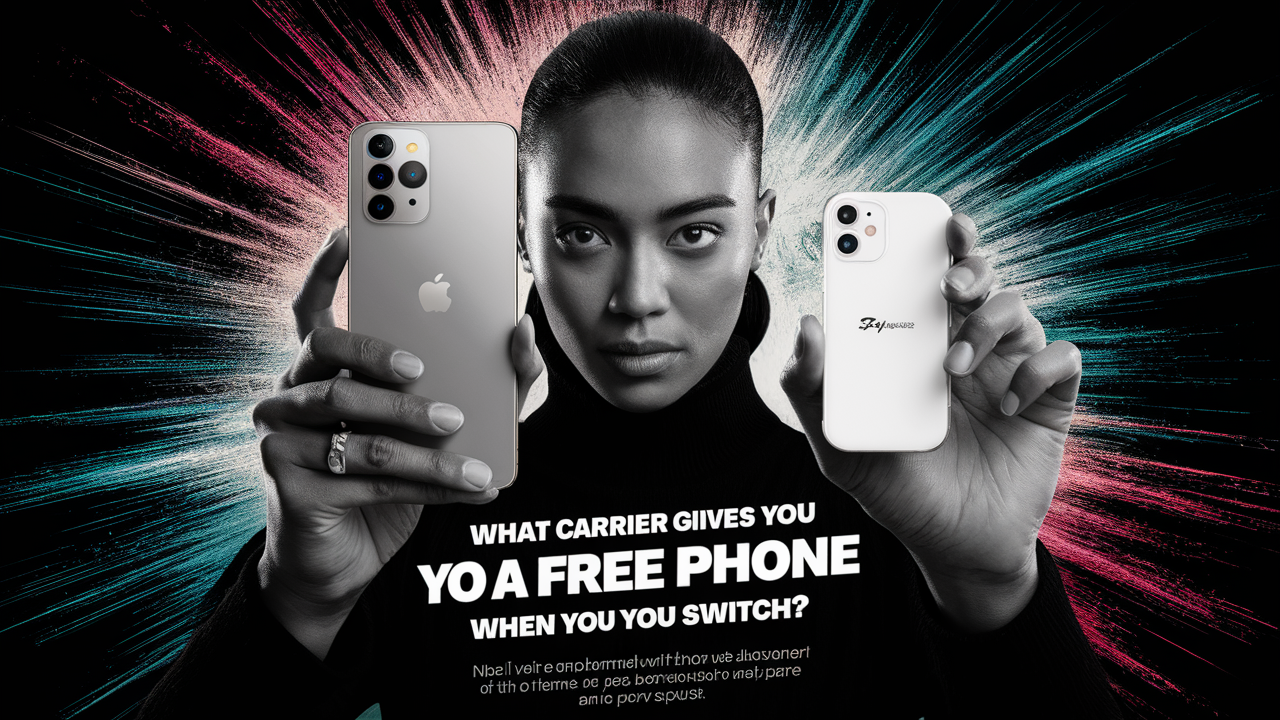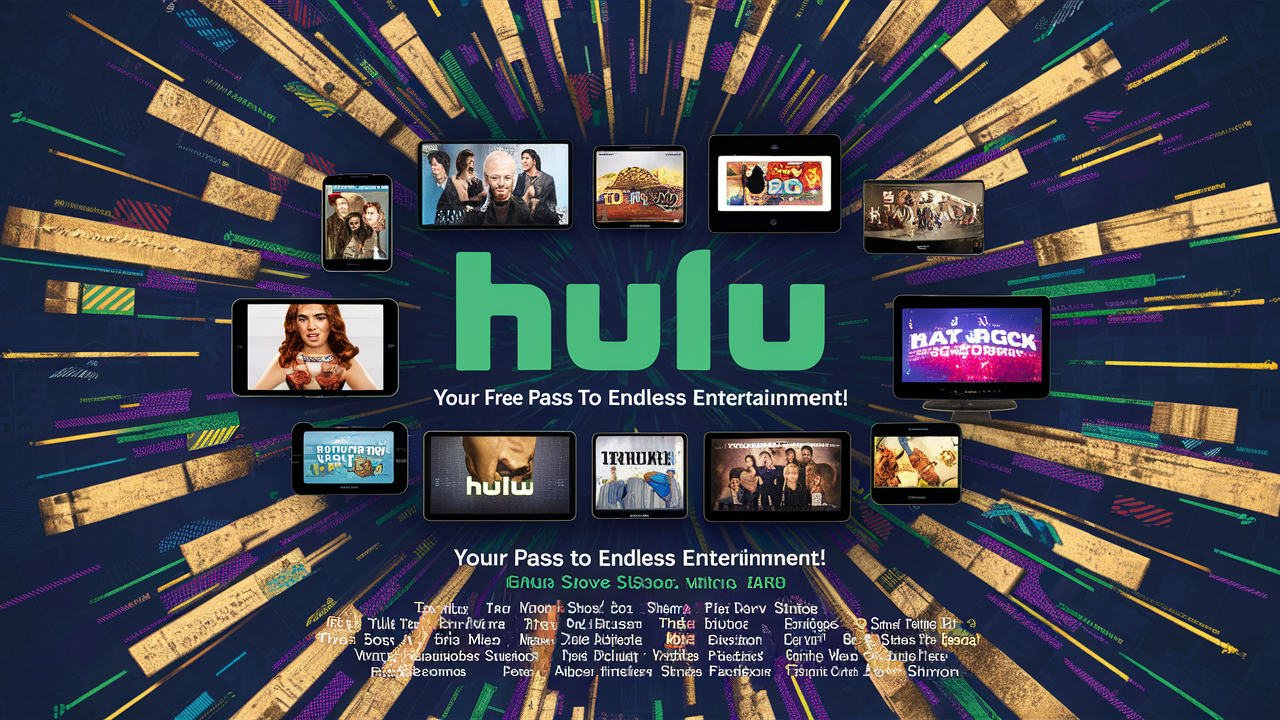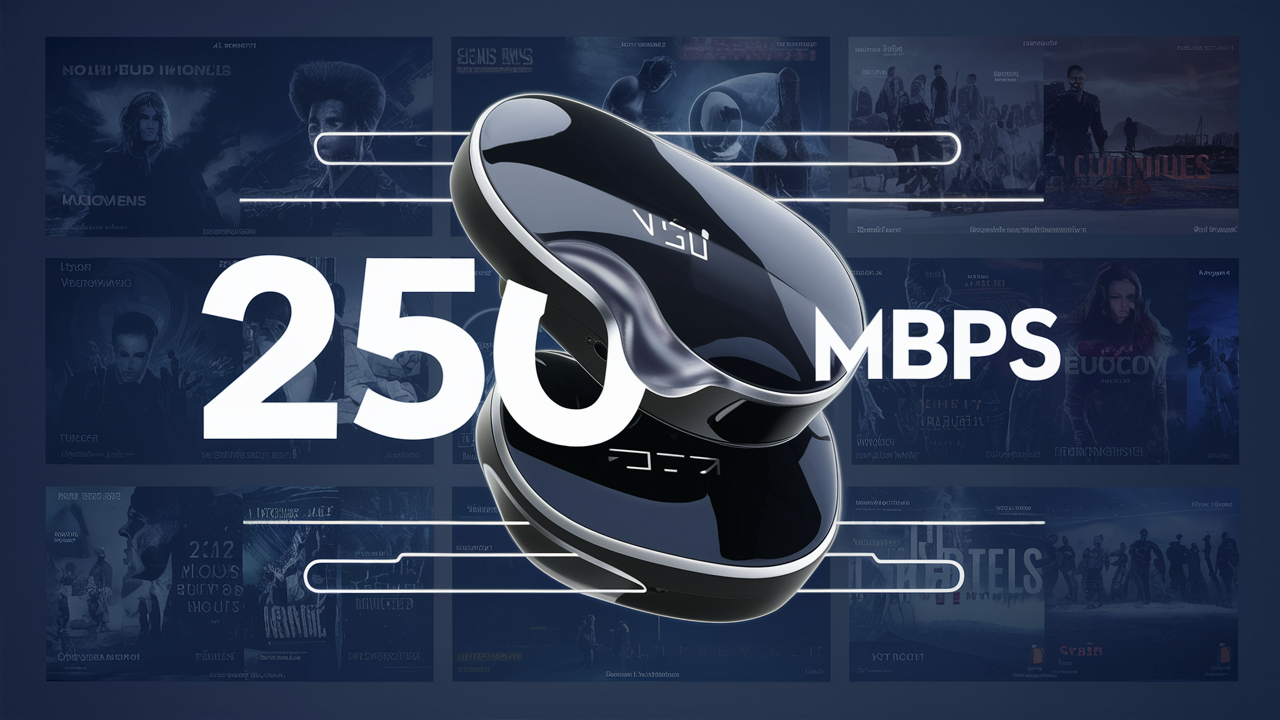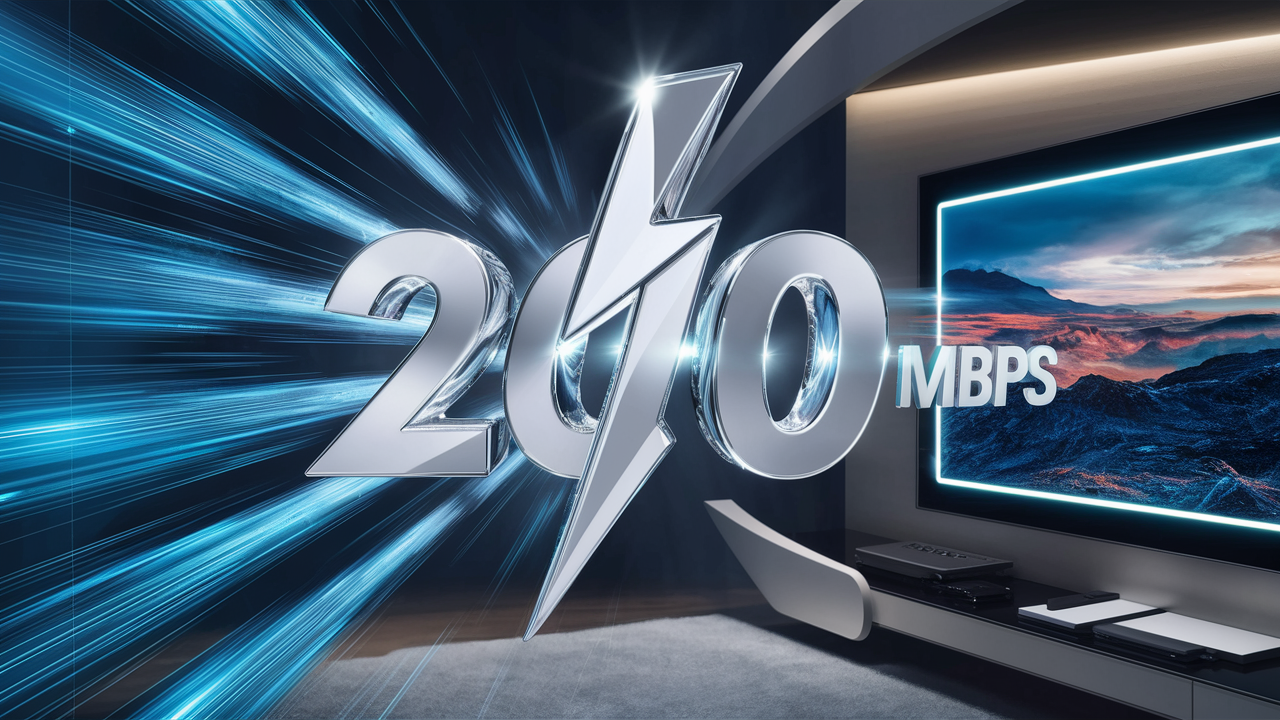The Complete Beginners Guide to TV Streaming

Cut the cord and embrace the future of entertainment! This comprehensive guide demystifies TV streaming for beginners, offering clear explanations, essential tips, and the latest 2025 insights to help you navigate the vast world of on-demand content and live TV alternatives. Discover how to choose the right services and devices for your needs.
What is TV Streaming?
TV streaming, often referred to as "cord-cutting," is the delivery of television content over the internet. Instead of relying on traditional cable or satellite providers, you access shows, movies, and live broadcasts through online services and apps. This allows for on-demand viewing and a more personalized entertainment experience. In 2025, it's the dominant way many households consume video content.
Why Stream Your TV? The Benefits of Cutting the Cord
The shift towards streaming isn't just a trend; it's a fundamental change in how we consume entertainment, driven by significant advantages over traditional television. For beginners, understanding these benefits is the first step in making the transition. By 2025, the allure of streaming is stronger than ever, offering unparalleled flexibility and cost-effectiveness for many.
Flexibility and Convenience
One of the most compelling reasons to stream is the sheer flexibility it offers. You can watch what you want, when you want, and where you want. Missed an episode? No problem. Want to binge-watch an entire season over a weekend? You can. Streaming services allow you to pause, rewind, and fast-forward content at your leisure, a stark contrast to the rigid schedules of traditional broadcast television.
Cost Savings
While the initial investment in devices might seem like a barrier, the long-term cost savings of streaming can be substantial. Traditional cable and satellite packages often come with hefty monthly fees, bundled channels you never watch, and expensive equipment rental. Streaming services, when chosen strategically, can offer a more tailored and affordable alternative. By 2025, many consumers have realized that a curated selection of streaming subscriptions often costs less than a single comprehensive cable package.
Vast Content Libraries
Streaming platforms boast an incredible array of content. From blockbuster movies and critically acclaimed original series to documentaries, sports, and niche programming, there's something for everyone. Services like Netflix, Max, Disney+, and Amazon Prime Video are constantly producing exclusive content that can't be found anywhere else, driving significant viewer engagement.
On-Demand Viewing
The core of streaming is "on-demand." This means you are in control. No more rushing home to catch your favorite show at its scheduled time. You can access your desired content whenever it suits your schedule, whether it's during your morning commute, a lunch break, or late at night. This convenience is a game-changer for busy individuals and families.
Personalized Recommendations
Streaming services use sophisticated algorithms to learn your viewing habits and preferences. This allows them to provide personalized recommendations, helping you discover new shows and movies you're likely to enjoy. This curated discovery process enhances the viewing experience and makes it easier to find content amidst the vast libraries available.
Accessibility
Streaming is accessible across a wide range of devices. Whether you have a smart TV, a streaming stick, a tablet, a smartphone, or a computer, you can likely access your favorite streaming services. This ubiquity means your entertainment is always within reach, transforming how and where you watch.
Essential Streaming Gear: What You Need to Get Started
Embarking on your streaming journey requires a few key components. Fortunately, the barrier to entry is lower than ever, and most households already possess much of what's needed. Understanding these essentials will ensure a smooth and enjoyable transition to digital entertainment in 2025.
Your Internet Connection: The Backbone of Streaming
This is arguably the most critical piece of equipment for streaming. A stable and fast internet connection is paramount for a buffer-free viewing experience. Slow or inconsistent internet will lead to pixelated video, frequent interruptions, and a frustrating experience. For HD streaming, a minimum of 5-10 Mbps (megabits per second) download speed is recommended per stream. For 4K content, which is becoming increasingly common in 2025, you'll need at least 25 Mbps, and ideally more if multiple devices will be streaming simultaneously.
Key Considerations for Internet:
- Speed: Ensure your plan meets the recommended speeds for your desired streaming quality (HD, 4K).
- Reliability: Look for providers known for consistent service in your area.
- Data Caps: Be aware of any data usage limits. Streaming video consumes significant data, so unlimited plans are often preferable.
According to recent reports from 2025, the average broadband speed in many developed nations has surpassed 100 Mbps, making streaming more accessible than ever. However, rural areas or older infrastructure might still present challenges.
Streaming Devices: Your Gateway to Content
While smart TVs offer integrated solutions, dedicated streaming devices are a popular and often more versatile option. These small boxes or sticks plug into your TV's HDMI port and connect to your Wi-Fi network, giving you access to a wide range of streaming apps and services. By 2025, the market offers numerous choices, each with its own strengths.
Popular Streaming Devices (2025):
- Roku Devices: Known for their user-friendly interface and vast app selection, Roku offers a range of devices from the budget-friendly Roku Express to the high-performance Roku Ultra.
- Amazon Fire TV Stick: These devices integrate seamlessly with Amazon's ecosystem and offer Alexa voice control. Popular models include the Fire TV Stick Lite, Fire TV Stick, and Fire TV Stick 4K Max.
- Google Chromecast with Google TV: This device combines the casting functionality of older Chromecasts with a full-fledged smart interface, allowing you to browse content directly on your TV.
- Apple TV 4K: A premium option favored by Apple users, offering excellent performance, a sleek interface, and integration with the Apple ecosystem.
- Nvidia Shield TV: A powerful, high-end device often recommended for gamers and those seeking the best performance and features, including advanced AI upscaling.
Each device typically costs between $30 and $200, making it an accessible upgrade for any TV. When choosing, consider factors like ease of use, app availability, 4K HDR support, and voice control features.
Smart TVs: Integrated Streaming Solutions
Many modern televisions come with built-in "smart" capabilities, meaning they have an operating system and Wi-Fi connectivity that allows you to download and run streaming apps directly. This eliminates the need for a separate streaming device, offering a cleaner setup. However, the performance and app selection on smart TVs can vary significantly depending on the manufacturer and the TV's age. Some smart TV operating systems can become outdated, limiting access to newer apps or features by 2025.
Popular Smart TV Platforms (2025):
- Google TV / Android TV: Found on many Sony, TCL, and Hisense TVs, offering a broad app selection and Google Assistant integration.
- webOS: LG's proprietary operating system, known for its intuitive interface and good performance.
- Tizen: Samsung's smart TV platform, offering a clean design and access to many popular apps.
- Roku TV: Some TVs from brands like TCL and Hisense come with Roku's operating system built-in, providing a familiar and user-friendly streaming experience.
- Fire TV Edition: Amazon's platform integrated into TVs from brands like Insignia and Toshiba.
If your current TV isn't smart, or if its smart features are lagging, a dedicated streaming device is an excellent and cost-effective way to bring it into the streaming age.
Types of Streaming Services: A 2025 Breakdown
The streaming landscape is diverse, offering various models to cater to different viewing habits and budgets. Understanding these categories is crucial for building a personalized streaming plan in 2025.
Subscription Video on Demand (SVOD)
This is the most common type of streaming service. You pay a recurring monthly or annual fee to get unlimited access to a library of content. These services are the titans of the streaming world, offering vast catalogs of movies, TV shows, and often, exclusive original programming.
Key Characteristics:
- Subscription Fee: Monthly or annual payment required.
- Ad-Free Viewing: Typically, these services offer an ad-free experience (though some are introducing ad-supported tiers).
- Extensive Libraries: Large collections of licensed and original content.
Examples (2025):
- Netflix: Pioneer in SVOD, known for its vast library and original series like "Stranger Things" and "The Crown."
- Max (formerly HBO Max): Offers premium content from HBO, Warner Bros., DC, and Discovery+.
- Disney+: Home to Disney, Pixar, Marvel, Star Wars, and National Geographic content.
- Amazon Prime Video: Included with Amazon Prime membership, featuring a mix of licensed content and popular originals like "The Boys."
- Apple TV+: Focuses on high-quality original series and films, such as "Ted Lasso" and "Severance."
- Hulu: Offers a mix of current TV shows from major networks (often the next day), older series, and original content.
In 2025, many SVOD services are also introducing cheaper, ad-supported tiers to attract more budget-conscious consumers. For instance, Netflix and Max offer such options.
Advertising-Supported Video on Demand (AVOD)
These services offer free access to content, supported by advertisements. They are an excellent option for those who want to watch content without a subscription fee and don't mind occasional commercial breaks. The content libraries might be smaller or older than those on SVOD services, but they are growing rapidly.
Key Characteristics:
- Free Access: No subscription fee required.
- Ad-Supported: Content is interrupted by advertisements.
- Varying Libraries: Content can range from classic movies to current TV shows, often with a focus on specific genres.
Examples (2025):
- Tubi: Offers a surprisingly large library of movies and TV shows from various studios, all for free with ads.
- Pluto TV: Owned by Paramount, it offers live-like channels and on-demand content across many genres, with ads.
- Freevee (formerly IMDb TV): Amazon's free streaming service, featuring originals and a rotating selection of movies and shows.
- The Roku Channel: Available on Roku devices and web, offering free movies, TV shows, and live channels.
- YouTube: While primarily known for user-generated content, YouTube also offers a selection of free movies and TV shows with ads, alongside its premium subscription options.
AVOD services are becoming increasingly sophisticated, with some even offering live news and sports channels, making them a viable alternative or supplement to paid services.
Live TV Streaming Services
These services aim to replace traditional cable or satellite TV by offering live channels, including news, sports, and entertainment, streamed over the internet. They are ideal for those who want to keep up with live events and broadcast schedules without a long-term contract.
Key Characteristics:
- Live Channel Access: Stream popular broadcast and cable channels in real-time.
- No Long-Term Contracts: Typically offer month-to-month subscriptions.
- DVR Functionality: Many include cloud-based DVR to record live programs.
- Bundled Packages: Offer different tiers of channels, similar to cable.
Examples (2025):
- YouTube TV: Offers a comprehensive package of over 100 channels, unlimited cloud DVR, and a user-friendly interface.
- Hulu + Live TV: Combines Hulu's on-demand library with live TV channels, including sports and news.
- Sling TV: A more customizable option, offering two base packages (Orange and Blue) that can be further enhanced with add-on "Extras."
- DirecTV Stream: Offers various packages, including options with regional sports networks and premium channels, often at a higher price point.
These services are often priced higher than SVOD services, ranging from $50 to over $100 per month, but can still represent savings compared to traditional cable, especially when you consider the elimination of equipment rental fees and the flexibility of cancellation.
Digital Rental and Purchase Services
These platforms allow you to rent or buy individual movies and TV shows digitally. They are perfect for accessing new releases or specific titles without committing to a subscription service. In 2025, these services remain popular for their pay-as-you-go model.
Key Characteristics:
- Pay-Per-View: Rent for a limited time or purchase for permanent digital ownership.
- New Releases: Often the first place to find brand-new movies after their theatrical run.
- No Subscription Required: You only pay for what you watch.
Examples (2025):
- Amazon Prime Video Store: Offers a vast selection of titles for rent or purchase, even if you don't have a Prime membership.
- Apple TV App (iTunes): Similar to Amazon, providing a large library of movies and shows to rent or buy.
- Google Play Movies & TV: Available on Android devices and web browsers.
- Vudu: Known for its extensive library and often competitive pricing, including a selection of free, ad-supported movies.
This model is ideal for occasional viewers or those who want to own specific digital titles without the commitment of a monthly subscription.
Choosing the Right Streaming Services for You
With so many options available, selecting the right streaming services can feel overwhelming. A strategic approach, considering your personal preferences and budget, will lead to a satisfying streaming experience. By 2025, the key is curation, not just accumulation.
Consider Your Viewing Habits
The first step is to honestly assess what you and your household watch. Do you primarily enjoy blockbuster movies, binge-worthy drama series, live sports, documentaries, or reality TV? Are you an early adopter eager to watch new original content, or do you prefer catching up on popular shows from previous seasons?
- Movie Buffs: Services like Netflix, Max, and Amazon Prime Video offer extensive film libraries. For the latest releases, digital rental services are essential.
- Series Binders: Netflix, Hulu, and Apple TV+ are strong contenders for binge-watching original series.
- Sports Fans: YouTube TV, Hulu + Live TV, or Sling TV are necessary for live sports. Dedicated sports streaming apps like ESPN+ or Peacock (for specific events) can supplement these.
- Documentary Enthusiasts: Many SVOD services have dedicated documentary sections, but specialized services or platforms like CuriosityStream might be worth considering.
- Family Viewing: Disney+ is a must-have for families with young children. Netflix and Max also offer significant family-friendly content.
Budgeting for Streaming: How Much Will It Cost?
The "cord-cutting" promise of significant savings is achievable, but it requires careful planning. A common mistake is subscribing to too many services, which can quickly exceed the cost of a traditional cable bill. In 2025, a balanced approach is key.
Steps to Budgeting:
- Determine Your Max Monthly Spend: Decide on a realistic monthly budget for all your entertainment subscriptions.
- Prioritize Services: List the services that offer the content you absolutely cannot live without.
- Mix and Match: Combine different types of services. For example, one premium SVOD service (like Max), a family-friendly service (like Disney+), and perhaps a live TV streaming service for sports, supplemented by free AVOD services for casual viewing.
- Rotate Subscriptions: Consider subscribing to a service for a few months to catch up on its content, then canceling and switching to another. This is particularly effective for services with a constant stream of new originals.
- Utilize Free Trials: Most services offer free trials. Use these strategically to test a service before committing.
A typical streaming setup in 2025 might involve 2-4 paid subscriptions, costing anywhere from $50 to $150 per month, depending on the services chosen. This is often less than comparable cable packages and offers more flexibility.
Content Library Comparison: What's Available?
Before subscribing, research the content libraries of the services you're considering. What specific shows or movies are you looking for? Are they originals on that platform, or licensed content that might appear on other services?
Resources for Comparison:
- Streaming Aggregator Websites: Many websites (e.g., Reelgood, JustWatch) allow you to search for specific titles and see which streaming services offer them.
- Service Websites: Visit the official websites of streaming services to browse their catalogs and see featured content.
- Review Sites: Tech and entertainment review sites often provide in-depth analyses of streaming service libraries.
Remember that licensed content can move between services, so what's available today might not be tomorrow. Services that focus heavily on originals, like Netflix or Apple TV+, offer more predictable content libraries.
Device Compatibility
Ensure that the streaming services you choose are compatible with your chosen streaming devices (smart TV, streaming stick, etc.). Most major services are available on all popular platforms, but it's always wise to double-check, especially for niche services or older devices.
General Compatibility (2025):
- Major SVODs (Netflix, Max, Disney+, Prime Video, Hulu, Apple TV+): Available on virtually all smart TVs, streaming devices (Roku, Fire TV, Apple TV, Chromecast), game consoles, and mobile devices.
- Live TV Streaming (YouTube TV, Hulu + Live TV, Sling TV): Widely available on most modern streaming devices and smart TVs. Some older devices might not support them.
- AVODs (Tubi, Pluto TV, Freevee): Generally available on most platforms, often pre-installed on smart TVs or streaming devices.
If you plan to use a specific device, check its app store or the service's website for compatibility information.
Setting Up Your Streaming Experience: A Step-by-Step Guide
Getting started with streaming is straightforward. Follow these steps to set up your system and begin enjoying your favorite content in no time.
Step 1: Ensure a Robust Internet Connection
As mentioned earlier, this is foundational. If you haven't already, check your internet speed. If it's consistently below the recommended levels for HD or 4K streaming, contact your internet service provider (ISP) to upgrade your plan or troubleshoot any issues. Investing in a good Wi-Fi router can also significantly improve your home network's performance.
Step 2: Choose and Set Up Your Streaming Device
If using a Smart TV: Ensure your TV is connected to your home Wi-Fi network. Navigate to your TV's app store and search for the streaming services you wish to use.
If using a dedicated Streaming Device (e.g., Roku, Fire TV Stick, Chromecast):
- Connect the Device: Plug the streaming device into an available HDMI port on your TV. Connect the power adapter to the device and plug it into a power outlet.
- Power On: Turn on your TV and select the correct HDMI input source for the device.
- Initial Setup: Follow the on-screen prompts. This will typically involve connecting the device to your Wi-Fi network by entering your password.
- Sign In/Create Account: You may need to sign in to a manufacturer account (e.g., Amazon account for Fire TV, Google account for Chromecast with Google TV) or create one.
Step 3: Download and Install Streaming Apps
Once your device is connected to the internet and set up, you'll need to download the apps for your chosen streaming services. This is usually done through the device's app store.
- Navigate to the app store on your smart TV or streaming device.
- Search for the names of the streaming services you want (e.g., "Netflix," "Max," "YouTube TV").
- Select the app and choose "Download" or "Install."
The apps will then be added to your device's home screen or app library.
Step 4: Create Accounts and Subscribe
For most streaming services (SVOD and Live TV), you'll need to create an account and subscribe. This is typically done either through the app on your device or via the service's website.
- Open the App: Launch the streaming app on your device.
- Sign Up/Log In: Look for options like "Sign Up," "Start Free Trial," or "Log In."
- Follow Instructions: You'll be prompted to enter your email address, create a password, and provide payment information.
- Choose Your Plan: Select the subscription tier that best suits your needs (e.g., standard HD, 4K, ad-supported).
For AVOD services, you might only need to create a free account or, in some cases, no account at all.
Step 5: Optimize Your Streaming Settings
Once everything is set up, take a moment to explore the settings within your streaming apps and device. This can enhance your experience.
- Video Quality: Most services allow you to set your preferred streaming quality (e.g., Automatic, Best, Data Saver). "Automatic" is usually best for balancing quality and data usage.
- Download Options: Some services allow you to download content for offline viewing on mobile devices.
- Parental Controls: Set up profiles and parental controls to manage content access for children.
- Account Management: Familiarize yourself with how to manage your subscriptions, update payment information, and log out of devices.
By following these steps, you'll be well on your way to enjoying the vast world of TV streaming.
Understanding Streaming Jargon: Key Terms Explained
The world of streaming comes with its own set of terms. Understanding these will help you navigate discussions and make informed decisions.
- Buffering: When the video playback pauses to download more data. This usually indicates a slow internet connection.
- Bandwidth: The amount of data that can be transmitted over your internet connection in a given time. Higher bandwidth is needed for higher quality streaming.
- Codec: A technology used to compress and decompress digital video and audio data (e.g., H.264, HEVC/H.265).
- DRM (Digital Rights Management): Technology used to control the use and distribution of copyrighted digital content.
- HDR (High Dynamic Range): A video technology that provides a wider range of colors and contrast, resulting in a more vibrant and realistic image. Common formats include HDR10, HDR10+, and Dolby Vision.
- HDCP (High-bandwidth Digital Content Protection): A copy protection standard used to prevent the copying of digital audio and video as it travels from a device to a display.
- IPTV (Internet Protocol Television): Television delivered over IP networks. Most streaming services are a form of IPTV.
- Mbps (Megabits per second): A unit of data transfer rate, commonly used to measure internet speed and video streaming quality requirements.
- On-Demand: Content that can be accessed and watched at any time chosen by the viewer.
- Resolution: The number of pixels in each frame of a video. Common resolutions include SD (Standard Definition, 480p), HD (High Definition, 720p or 1080p), and 4K UHD (Ultra High Definition, 2160p).
- Streaming Stick/Box: A small device that connects to your TV's HDMI port to enable streaming.
- SVOD: Subscription Video on Demand.
- AVOD: Advertising-Supported Video on Demand.
- VPN (Virtual Private Network): Can be used to bypass geo-restrictions or enhance privacy, though its use with streaming services can violate terms of service.
Streaming on a Budget: Smart Strategies for Savings
Achieving significant savings with streaming is entirely possible with a few smart strategies. The key is to be a discerning consumer rather than a passive subscriber.
Effective Budgeting Tactics:
- Rotate Subscriptions: This is perhaps the most powerful strategy. Subscribe to a service for a month or two to catch up on its exclusive content or new releases, then cancel and switch to another. This allows you to enjoy a wide variety of content without paying for multiple services year-round. For example, binge "The Mandalorian" on Disney+ for a month, then switch to Max to catch up on HBO originals.
- Leverage Bundles: Some services offer bundles that can save money. For instance, Amazon Prime includes Prime Video. Some mobile carriers or internet providers also offer streaming service perks.
- Utilize Free Tiers and AVOD Services: Don't underestimate the value of free streaming services like Tubi, Pluto TV, Freevee, and The Roku Channel. They offer a surprising amount of content for zero cost, supported by ads.
- Share Accounts (Wisely): Many streaming services allow multiple profiles within a single account. If you have trusted family or friends, sharing an account (within the service's terms of use) can halve the cost. Be aware of each service's policy on account sharing outside of your household, as this is becoming a point of contention for providers in 2025.
- Look for Annual Plans: Some services offer a discount if you pay for a full year upfront. If you know you'll be using a service long-term, this can be a good way to save.
- Student and Military Discounts: Keep an eye out for special discounts offered by some providers.
- Avoid Piracy: While tempting, illegal streaming or downloading is not only unethical but also carries significant risks, including malware and legal consequences. Stick to legitimate services.
By combining these tactics, you can build a robust and diverse entertainment library for a fraction of the cost of traditional cable.
The Future of TV Streaming: 2025 and Beyond
The streaming landscape is in constant evolution. As we look at 2025 and beyond, several trends are shaping the future of how we watch television.
- Consolidation and Bundling: The market is becoming increasingly competitive, leading to potential mergers and acquisitions. We're also seeing more bundling of services, either directly from providers or through third-party aggregators, to simplify offerings and offer value.
- Ad-Supported Tiers Dominate: The shift towards cheaper, ad-supported subscription tiers is a major trend. This allows services to reach a broader audience and generate more revenue, making premium content more accessible to budget-conscious viewers.
- Live Content Integration: Streaming services are increasingly incorporating live content, from sports and news to live events and interactive shows, blurring the lines between on-demand and traditional broadcasting.
- Gaming and Interactivity: Expect to see more integration with cloud gaming services and interactive content that allows viewers to influence storylines or participate in real-time.
- Personalization and AI: Artificial intelligence will continue to play a crucial role in personalizing recommendations, optimizing streaming quality, and even generating content.
- Focus on Profitability: After years of rapid growth, many streaming companies are now prioritizing profitability, which may lead to increased prices, stricter account-sharing policies, and a more curated approach to content investment.
For beginners, this means the streaming world will continue to offer exciting new ways to consume entertainment, but it also emphasizes the importance of staying informed and adapting your strategy to make the most of the available options.
In conclusion, the world of TV streaming offers unparalleled freedom, variety, and potential cost savings. By understanding the core concepts, the necessary gear, and the diverse range of services available, beginners can confidently cut the cord and build a personalized entertainment experience. Prioritize your viewing habits, set a realistic budget, and don't be afraid to rotate subscriptions or leverage free AVOD options. The future of television is here, and it's more accessible and adaptable than ever before.





